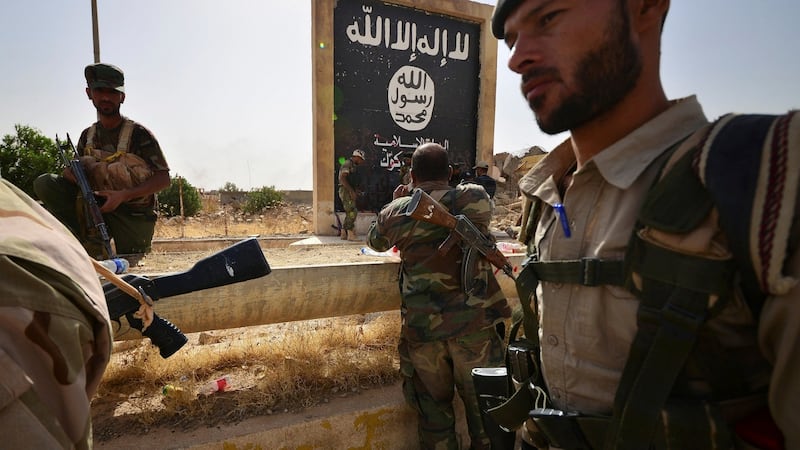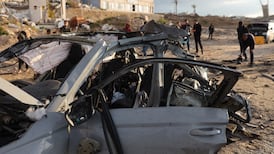Its de facto capital is falling. Its territory has shrivelled from the size of Portugal to a handful of outposts. Its surviving leaders are on the run. But rather than declare Islamic State and its virulent ideology conquered, many western and Arab counterterrorism officials are bracing for a new, lethal incarnation of the jihadi group.
The organisation has a proven track record as an insurgency able to withstand major military onslaughts, while still recruiting adherents around the world ready to kill in its name. Islamic State leaders signalled more than a year ago that they had drawn up contingency plans to revert to their roots as a guerrilla force after the loss of their territory in Iraq and Syria. Nor does the group need to govern cities to inspire so-called lone wolf terrorist attacks abroad, a strategy it has already adopted to devastating effect in Manchester and Orlando, Florida.
“Islamic State is not finished,” said Aaron Zelin, who studies jihadi movements at the Washington Institute for Near East Policy. “IS [Islamic State, or Isis] has a plan, and that is to wait out their enemies locally in order to gain time to rebuild their networks while at the same time provide inspiration to followers outside to keep fighting their enemies farther away.’”
Even with the news on Tuesday that US-backed forces said they had captured Raqqa, the capital of the group’s self-declared caliphate, European counterterrorism officials were worrying about sleeper cells that may have been sent out well before the battlefield losses mounted.
In Iraq, where the group that became the Islamic State took root, security officials are bracing for future waves of suicide attacks against civilians. And even if governments are able to head off organised plots like the Paris attacks of 2015, officials around the globe concede that they have almost no way of stopping lone wolf assaults inspired or enabled by Islamic State propaganda that lives online.
"It is clear that we are contending with an intense UK terrorist threat from Islamist extremists," Andrew Parker, the director of Britain's MI5 intelligence service, said in a speech on Tuesday. "That threat is multidimensional, evolving rapidly, and operating at a scale and pace we've not seen before."
If Islamic State does decline, other jihadi organisations are poised to fill the vacuum. Al-Qaeda, whose appeal to young fighters had been largely eclipsed by the tech-savvy new caliphate of Islamic State, is vying for a comeback.
The group's ability to weld religious fervour to the political resentments of disenfranchised Sunni Muslims in Shia-dominated Iraq already saved it once, when it appeared broken by the US military surge in Iraq in 2007 and 2008. By the time US forces withdrew from Iraq in 2011, intelligence officials estimated that Islamic State's predecessor, then called the Islamic State of Iraq, was down to its last 700 fighters. The group was considered such a minor threat that the reward offered by the United States for the capture of its leader plummeted from $5 million to $100,000.
It took less than three years for those beaten-down and diminished insurgents to regroup and roar across Iraq and Syria, declaring an Islamic caliphate from the Mediterranean coast of Syria nearly to the Iraqi capital, Baghdad. It became both the world's wealthiest terrorist group, and the most feared.
Stronger today
Even with the loss of most of that territory, the organisation is far from defeated, and remains far stronger today than it did when US troops pulled out of Iraq. The group currently has from 6,000 to 10,000 fighters in Iraq and Syria, the US-led coalition said on Friday. That is eight to 14 times the number it had in 2011.
“That’s the relevant comparison,” said Daniel Byman, a senior fellow at the Brookings Institution’s Centre for Middle East Policy, who tracks jihadi groups. “This is a very strong group which has a lot of sympathisers, its ideas are embedded and it has networks. It has a lot to draw on even as it loses its physical territory.”
The group has also developed a powerful social media network that with no physical presence allows it to spew propaganda, claim responsibility for terrorist attacks, and not just inspire attacks but also help plot and execute them remotely. A large share of its attacks in the West in recent years have been carried out by men who communicated online with Isis, taking detailed instructions through encrypted messages, but never meeting their terrorist mentors.

The first major attack in the United States claimed by Isis, a foiled shooting at a Texas community centre in 2015, was directed this way, according to a recent assessment by the Defense Intelligence Agency. Islamic State may also have undercover operatives or sleeper cells outside the Middle East.
Senior US officials said last year that the group had sent hundreds of operatives to Europe and hundreds more to Turkey. And the group has continued to sow chaos even as it has lost territory. In 2017 alone, it has claimed responsibility for three terrorist attacks in Britain that killed 37 people, the Istanbul nightclub bombing on New Year's Eve that killed 39 people, and strikes in more than seven other countries.
As the group was losing Mosul, Iraq's second-largest city, in August, it sent a van tearing through crowds in the heart of Barcelona, killing 13 people and loudly declaring its continued relevance.
Footprint
It is also premature to assert that the Islamic State is running out of territory. While its footprint has shrunk in Iraq and Syria, it still controls close to 4,000 square miles along the Euphrates River Valley on both sides of the Iraq-Syria border. US and Iraqi military commanders believe the group’s core leaders have gone to ground in the largely barren areas along the border.
At the same time, Isis branches in North Africa and Asia are still launching operations, and its camps in eastern Afghanistan remain largely intact, despite recent US air strikes. Some areas that were previously declared liberated have seen a return of Isis fighters.
In Libya, where the group was routed from a 100-mile stretch of coastline in late 2016, the militants recently posted a video showing their fighters manning a new checkpoint. And far from its roots in the Middle East, the group continues to grow in other corners of the world, including in the Philippines, where a local affiliate held the town of Marawi for months, and in West Africa, where the militants continue to grow their ranks, encroaching on areas formerly under al-Qaeda's grasp.
If Islamic State does decline, other jihadi organisations are poised to fill the vacuum. Al-Qaeda, whose appeal to young fighters had been largely eclipsed by the tech-savvy new caliphate of Islamic State, is vying for a comeback.
"The reason that the IS gained a big following quickly was that it appealed to the hotheads, those looking for instant gratification," said Bill Roggio, a senior fellow at the Foundation for the Defense of Democracies who monitors terrorist groups. "That caliphate model is all gone, but al-Qaeda remains."
The older group has been urging followers to pivot from Islamic State’s focus on the battlefields of the Middle East and instead put an emphasis on attacks in the United States and other foreign lands. It has also been promoting a younger, charismatic new leader: Hamza bin Laden (27), the son of Osama.
New York Times service











